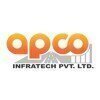Filter interviews by
Vijay Nirman Company Graduate Engineer Trainee (Get) Interview Questions and Answers
Vijay Nirman Company Graduate Engineer Trainee (Get) Interview Experiences
1 interview found
Interview Questionnaire
1 Question
- Q1. Thickness of mortar in the brick masonry
- Ans.
The thickness of mortar in brick masonry is typically 10mm to 12mm.
The thickness of mortar depends on the size of the bricks used.
It is important to maintain consistent thickness throughout the masonry work.
The thickness can be adjusted to accommodate irregularities in the brick size or shape.
The mortar should be applied evenly and excess should be removed.
The thickness of the mortar can affect the strength and durabil
Interview Preparation Tips
Top trending discussions






Interview questions from similar companies

Graduate Engineer Trainee (Get) Interview Questions & Answers
L&T Energy Hydrocarbonposted on 23 Jan 2017
I appeared for an interview in Aug 2016.
Interview Preparation Tips
Duration: 1 hour 30 minutes
Total Questions: 90
Round: Group Discussion
Duration: 20 minutes
Round: Technical + HR Interview
Experience: 1-There was only 1 Interview round.
An employer form was given one day before interview along with an extra paper containing question about what Functional area(production, quality, design, R&D) will u prefer after going to company and why.
2-HR part-
A)-First question was to introduce yourself.
I have answered it and ended it by telling my strength as Pre- planning and time management.
Then they asked me to prove how I have pre planned before coming to interview.
B)-Then other questions related to hobbies and extra-curricular.
In answer to this question I have given the brief overview of all the events and activities in which I have participated.
C)-I have written in my CV writing poem as a hobby, then they told me to narrate few lines of poem.
D)-Then they asked anything recently I have learnt.
In answer to this I have told about my recent summer internships and project allotted there.
E)-They said functional area provided will be according to company requirement. Then I said OK I am comfortable with all departments but I will prefer that dept. which I have filled in the form.
3)-Technical part-
A)-At first they have asked about my projects done under professors.
B)-Then they asked about my FINAL year project I explained it until they said OK. to stop it.
C)-Then they come to AOI(Area of Interest) part.
D)-They asked about why piston up surface shapes (convex/concave) used in 2 stroke and 4 stroke engines?
E)-Then They asked to draw 2 stroke engine with explaining all its parts and working.
F)-Next question was to explain Straight polarity and Reverse polarity in Welding, its uses and basic concept.
G)-Then they asked about Facing operation in lathe whether it can be performed for square cross-section bars or not?
I have answered this question as yes it can be performed but there will be more vibrations and noise; So more lubrication will be required hence cost to make per product will increase that is loss for the company. So it is not performed usually

30 minutes, Aptitude and Technical
(3 Questions)
- Q1. Where do you see yourself in 5 years?
- Q2. What are your strengths and weaknesses?
- Q3. Tell me about yourself.
Interview Preparation Tips

Graduate Engineer Trainee (Get) Interview Questions & Answers
URC Constructionposted on 10 Nov 2024
I applied via Campus Placement and was interviewed before Nov 2023. There were 2 interview rounds.
(1 Question)
- Q1. Objective Questions asked based on the civil domain
(2 Questions)
- Q1. Question from cv
- Q2. Calculate weight of steel plate, dimension given
- Ans.
Calculate weight of steel plate based on given dimensions
Calculate the volume of the steel plate using the given dimensions
Use the density of steel (usually around 7850 kg/m^3) to calculate the weight
Weight = Volume x Density

Graduate Engineer Trainee (Get) Interview Questions & Answers
Samsung E&Aposted on 15 May 2022

(1 Question)
- Q1. Relevant to all subject it is normal paper.
(1 Question)
- Q1. Relevant to your past and future ahead.
Interview Preparation Tips

Graduate Engineer Trainee (Get) Interview Questions & Answers
Samsung E&Aposted on 3 Dec 2022
I applied via Campus Placement

(2 Questions)
- Q1. Designing of beams, steel designing
- Q2. SFD BMD AND ENVIRONMENT ENGINEERING
(2 Questions)
- Q1. About intership, LIKE HOW U TACKLE WITH UNEDUCATED WORKFORCE
- Q2. GRADES IS LOWER.. LIKE UR GRADES ARE LOWERING DAY BY DAY
Interview Preparation Tips

Assistant Manager Interview Questions & Answers
L&T Energy Hydrocarbonposted on 6 Jan 2022
I applied via Referral and was interviewed before Jan 2021. There were 3 interview rounds.
Interview Questionnaire
1 Question
- Q1. Mainly consantraint for pump and high temp lines and material.
Interview Preparation Tips

I appeared for an interview before Aug 2016.
Interview Questionnaire
1 Question
- Q1. Questions on C++
Interview Preparation Tips
Experience: Only those with Java, C++ and JavaScript were shortlisted.
Round: Test
Experience: Pretty basic
Duration: 3 hours

I appeared for an interview in Sep 2016.
Interview Questionnaire
1 Question
- Q1. They asked me about RAM and ROM
Interview Preparation Tips
Experience: I studied about them before so it was not a problem for me
Skills: Coding Skills
College Name: IIT Kharagpur

Senior Engineer Interview Questions & Answers
L&T Energy Hydrocarbonposted on 11 Apr 2021
I applied via Walk-in and was interviewed before Apr 2020. There was 1 interview round.
Interview Questionnaire
6 Questions
- Q1. Can you explain Man day
- Q2. Can you explain manpower mobilization.
- Ans.
Manpower mobilization refers to the process of deploying and managing personnel for a specific project or task.
Identifying the required personnel for a project
Recruiting and hiring personnel
Training and orienting personnel to the project
Assigning roles and responsibilities to personnel
Managing personnel performance and productivity
Ensuring compliance with labor laws and regulations
Examples include mobilizing a construc...
- Q3. How to cost control in project
- Ans.
Cost control in project can be achieved through effective planning, monitoring and controlling of project expenses.
Create a detailed project budget and stick to it
Track expenses regularly and adjust budget as needed
Identify and eliminate unnecessary expenses
Negotiate with vendors for better pricing
Implement cost-saving measures without compromising quality
Use project management tools to monitor expenses and progress
Reg...
- Q4. Can you explain how to handle clinent
- Ans.
Handling clients requires effective communication, understanding their needs, and providing timely solutions.
Listen actively to their concerns and requirements
Communicate clearly and professionally
Provide timely updates and solutions
Build a strong relationship based on trust and respect
Be proactive in identifying and addressing potential issues
Ensure customer satisfaction by going above and beyond expectations
- Q5. Flow chart for manpower mobilization
- Ans.
Manpower mobilization flow chart involves identifying needs, planning, recruitment, training, and deployment.
Identify the need for manpower
Plan the recruitment process
Source and screen candidates
Conduct interviews and assessments
Select and hire candidates
Provide training and orientation
Deploy manpower to required locations
- Q6. Prepared organisation chat for project handling
Interview Preparation Tips
Tell us how to improve this page.
Vijay Nirman Company Interviews By Designations
- Vijay Nirman Company Manager Interview Questions
- Vijay Nirman Company Planning Manager Interview Questions
- Vijay Nirman Company Assistant Manager Finance Interview Questions
- Vijay Nirman Company Civil Site Engineer Interview Questions
- Vijay Nirman Company General Manager Contracts Interview Questions
- Vijay Nirman Company Graduate Engineer Trainee (Get) Interview Questions
- Vijay Nirman Company Assistant Manager-F&A Interview Questions
Interview Questions for Popular Designations
- Graduate Apprentice Trainee Interview Questions
- Graduate Apprenticeship Trainee Interview Questions
- Graduate Trainee Interview Questions
- Graduate Engineer Interview Questions
- Production Graduate Engineer Trainee Interview Questions
- Graduate Student Interview Questions
- Graduate Apprentice Interview Questions
- Post Graduate Engineer Trainee [pget] Interview Questions
- Show more
Graduate Engineer Trainee (Get) Interview Questions from Similar Companies

Vijay Nirman Company Graduate Engineer Trainee (Get) Reviews and Ratings
based on 13 reviews
Rating in categories
|
Civil Engineer
37
salaries
| ₹1.5 L/yr - ₹10 L/yr |
|
Civil Site Engineer
36
salaries
| ₹1.8 L/yr - ₹5 L/yr |
|
Assistant Engineer
32
salaries
| ₹2.4 L/yr - ₹4.9 L/yr |
|
Assistant Engineer - Civil
31
salaries
| ₹2 L/yr - ₹5 L/yr |
|
Safety Officer
24
salaries
| ₹1.8 L/yr - ₹5.2 L/yr |

AECOM

L&T Energy Hydrocarbon

Apco Infratech

Saipem
- Home >
- Interviews >
- Vijay Nirman Company Interview Questions >
- Vijay Nirman Company Graduate Engineer Trainee (Get) Interview Questions












